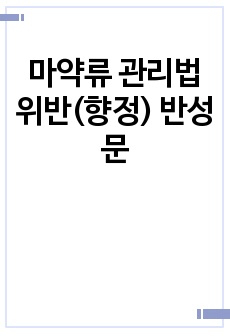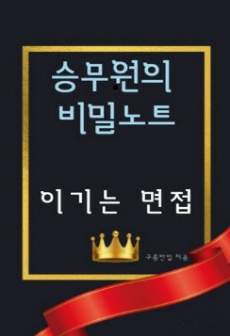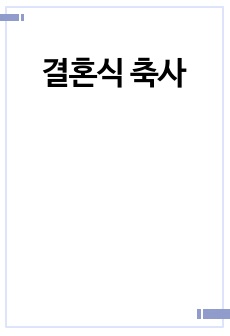* 본 문서는 배포용으로 복사 및 편집이 불가합니다.
서지정보
ㆍ발행기관 : 서울대학교 기술과법센터
ㆍ수록지정보 : LAW & TECHNOLOGY / 8권 / 6호
ㆍ저자명 : 허용록
목차
I. 서론
II. ITC 특허 분쟁 제도
III. ITC 주요 결정 분석
IV. ITC 특허분쟁절차에서의 기업의 대응방안
한국어 초록
ITC 337조 조사는 연방지방법원에서의 특허분쟁과 상이한 특면이 많다. ITC 관할은 대물관할이고 미국 전역에 효력이 미치지만 연방지방법원에서는 제한적인 대인관할권을 갖는다. 연방지방법원에서 소송적격을 갖추기 위해서는 단순히 특허 소유권과 피고에 의한 침해를 주장하는 것으로 충분하다. 그러나 ITC에서 소송적격을 갖추기 위해서는 다음과 같은 요건을 필요로 한다; 1) 수입행위 : 신청인은 피의 침해제품이 수입이 되고 있다는 것을 증명하여야 한다. 2) 국내산업: 국내산업 요건을 충족하기 위해서는 (a) 공장∙설비에 의미있는 투자 또는 (b) 의미있는 노동자의 고용 및 자본 투자 또는 (c) 엔지니어링, 연구개발, 라이선스 등의 지식재산권을 사용하기 위한 실질적인 투자를 갖추어야 한다. ITC는 연방지방법원은 권한이 없는 독자적으로 조사를 개시할 수 있는 권한을 가지고 있다. ITC에서의 조사절차는 연방지방법원 소송과 비교할 때 상대적으로 기간이 짧다. 이에 더하여, ITC 신청서는 ITC의 사실 청원 요건으로 인하여 연방지방법원의 소장과는 아주 다르다. ITC 절차는 침해 주장의 근거를 형성하는 구체적인 사실과 적합하도록 추정되는 불공정 행위의 실체를 필요로 한다. 따라서, 자신의 특허가 침해되고 있다고 믿고 있는 특허권자는 ITC 절차를 시작할 때 불공정 행위의 모든 요소를 커버할 수 있도록 충분한 근거를 주장하도록 요구되고 있다. 연방지방법원 사건에서는 연방민사소송법이 보다 광범위하고 아주 애매한 통고 청원을 허용하고 있다. ITC에서의 구제는 a) 당사자에 대한 한정배제명령, b) 임시한정배제명령(조사기간과 대통령 심사 기간), c) 총괄배제명령(당사자가 아니라도 해당자 모두), d) 중지/중단명령 그리고 e) 임시중지/ 중단명령 등이 있다. 상기와 같은 점을 고려할 때, ITC에서의 신청인과 피신청인은 연방지방법원과는 다른 전략을 개발하여야 한다. ITC에서의 신청인은 위에서 살펴본 구제 중 이용 가능한 구제를 적시하여야 한다. 또한 신청인은 자신이 구하고자 하는 구제명령을 얻기 위한 특정한 요건을 충족시켜야 한다. ITC가 최종적인 명령을 내린 후에도, 승소한 신청인은 구제의 성공적인 집행을 위하려 세관과 친밀한 전략적 관계를 유지하여야 하고 고객 정보를 제공하고 시장을 계속 감시하여야 한다. ITC 절차에서의 피신청인은 ITC 절차 요건에 의해 제공되는 방어를 활용할 수 있는데, 피신청인은 수입행위 부재, 국내산업의 부존재, 국내산업에 대한 손해의 부재 등을 주장할 수 있다. 피신청인은 또한 비침해, 무효, 집행 불가능 등의 특허법에 근거한 방어를 활용할 수 있다.
영어 초록
ITC section 337 investigation has different aspects from patent disputes in a district court.ITC jurisdiction is in rem and is nationwide, as opposed to the limited in personal jurisdiction of adistrict court. To obtain standing in a district court, merely alleging ownership of patent right andinfringement by a defendant is sufficient. However, in order to establish standing in the ITC, thefollowing requirements are needed; A) Importation: a complainant must show that the articlesallegedly infringing are imported. B) Domestic industry; domestic industry requires a)Significant investment in plant and equipment; or (b) Significant employment of labor or capital;or (c) Substantial investments in its exploitation, including engineering, research, developmentor licensing. The ITC has the power to independently initiate an action which the district courtdoes not possess. The ITC action takes a relatively short period of time compare to an action inthe district court. In addition, an ITC complaint differs greatly from a district court filing becauseof the ITC’s fact pleading requirement. The ITC requires the substance of the alleged unfair actto be pled with specific facts which form the basis of the allegations. Therefore, a patent ownerbelieving his or her patent has been infringed is required to assert grounds sufficient to cover allthe elements of an unfair trade claim at the very beginning of an ITC proceeding. In district courtcases, the Federal Rules of Civil Procedure allow broader and more ambiguous “notice”pleading.The remedies in the ITC include a) limited exclusion order(against parties), b) temporarylimited exclusion orders (during the investigation and the Presidential review period), c) generalexclusion orders (against any person, even non-parties), d) cease and desist orders and e)temporary cease and desist orders.Considering the above-referenced differences, both a complainant and a respondent in the ITCinvestigation should develop strategies different from a district court action. A complainant in theITC has to enumerate a pursuing order among the above-mentioned available remedies. Acomplainant should meet the specified requirements to get the order he needs. Even after the ITCissues its final order, the victorious complainant has to set up a proactive strategy of working withCustoms, informing customers and monitoring the market for successful enforcement of remedies. A respondent in the ITC action may use defenses provided by the ITC requirements, a respondent can show no importation, absence of domestic industry and no damages to domesticindustry. A respondent can also utilize the defenses based on patent law, non-infringement,invalidation, unenforceability, etc.
참고 자료
없음
"LAW & TECHNOLOGY"의 다른 논문
더보기 (2/7)




